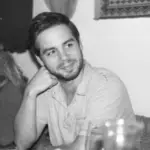Rob Hall’s Demise Was So Dramatic And Harrowing It Was Turned Into A Hollywood Film
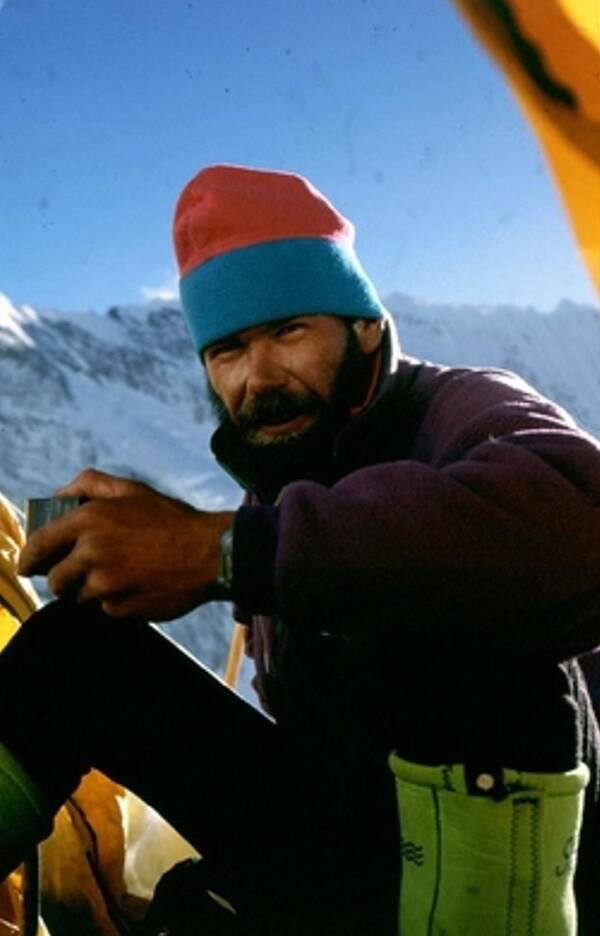
Wikimedia CommonsRob Hall on a successful Everest expedition.
Like Tsewang “Green Boots” Paljor, Rob Hall perished in the 1996 Everest Disaster. But Hall’s journey to the top couldn’t have been more different from Paljor’s.
The New Zealander had always been passionate about climbing as a recreational sport. From his youth in the Southern Alps to his challenging climbs as a young adult, he fostered an intense enthusiasm for mountaineering, one that overflowed when he met the likeminded Gary Ball. The pair soon devised a shared goal to climb the “Seven Summits.”
The Seven Summits challenge dared contenders to climb the tallest mountain on each continent in succession. The “Seven Summits” were Everest in Asia, Aconcagua in South America, Denali in North America, Kilimanjaro in Africa, Elbrus in Europe, Kosciuszko in Australia, and Vinson in Antarctica.
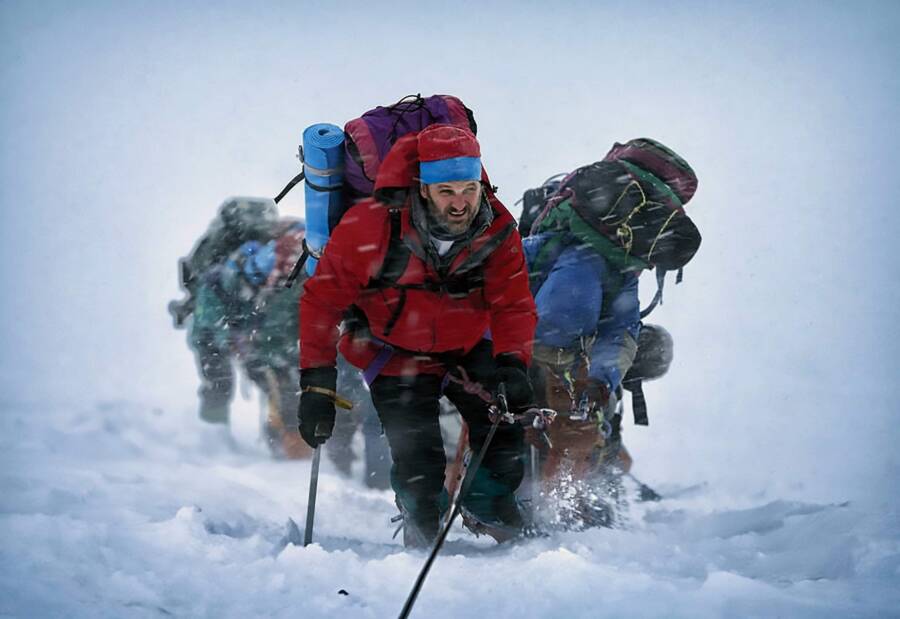
Universal PicturesJason Clarke as Rob Hall in 2015’s Everest, which was based on Jon Krakauer’s 1997 book, Into Thin Air.
To the amazement of onlookers worldwide, the duo accomplished the feat in 1990 in record time — seven peaks in seven months. Soon, the pair opened their own expedition guiding company, Adventure Consultants, in 1992. But that same year, the pair would return to Everest in an expedition that claimed Ball’s life.
Ball’s cause of death was HAPE, or high-altitude pulmonary edema. He was buried by his partner in a crevasse. Traumatized yet adamant to retain his passion, Hall continued to guide expeditions up Mount Everest until that last fateful expedition in 1996.
Among his more than 300 clients on that fateful trip were Beck Weathers, who dreamed of accomplishing the Seven Summits feat like his guide. Hall was also guiding journalist Jon Krakauer up the mountain, whose 1997 book Into Thin Air was adapted into the 2015 adventure film Everest.
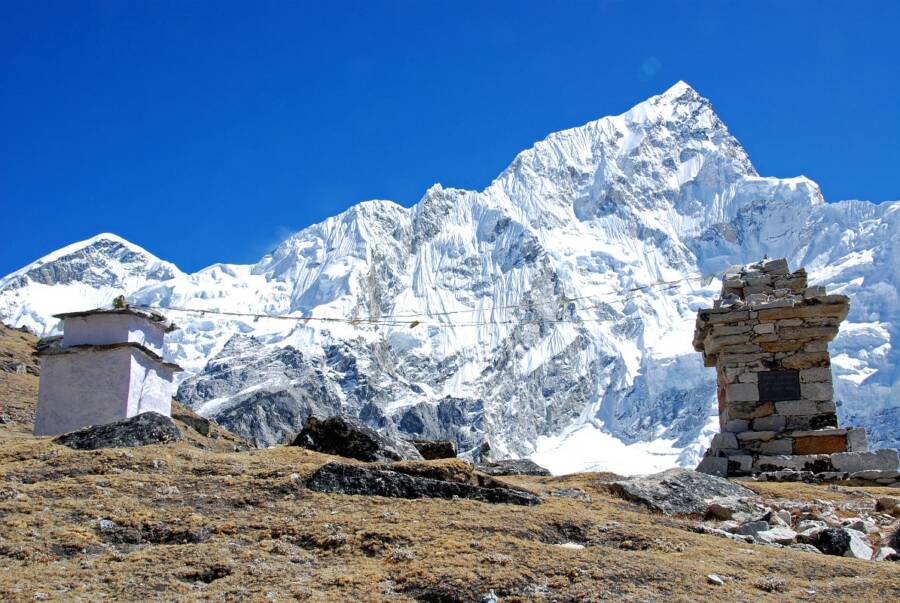
Wikimedia CommonsThe memorial built for Hall, Hansen, and climbers Andy Harris and Yasuko Namba.
The climb on May 10 began smoothly enough, but nightfall yielded serious visibility issues, with Weathers being forced to stay behind and wait for the group’s return from the summit.
Nevertheless successfully reaching Everest’s peak by 3 p.m., the group began their descent and encountered an incapacitated climber named Doug Hansen. Hall stayed with him as sherpas led the group down. But with a blizzard and 150 mile-per-hour winds swooping in shortly after, Hall and Hansen were stuck.
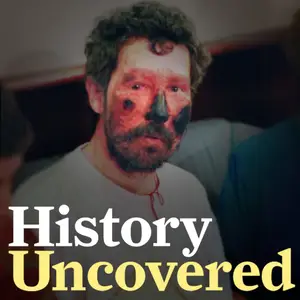
Twelve hours later, Hansen was dead. Though one of Hall’s guides had begun to ascend with extra oxygen, the would-be rescuer went missing. Hall had managed to fix his broken mask regulator by 9 a.m. the following morning, but it was too late, as his hands and feet were already severely frostbitten.
“Sleep well my sweetheart,” he told his wife on satellite phone. “Please don’t worry too much.”
Hall’s body remains in the spot where he perished to this day, and continues to be one of the most well-known of all the dead bodies on Mount Everest.

